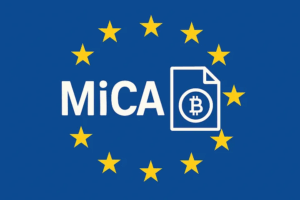Welcome to the world of blockchain communication, where clarity and caution go hand in hand! In this article, we’ll walk you through some crucial rules that apply to virtually any blockchain project, no matter its stage of development. While this guide doesn’t cover every possible scenario, it provides foundational principles that are essential for effective communication and risk management.
At DLT Law, we tailor our advice to each client’s unique characteristics and needs, crafting specific guidelines and policies that fit their projects. We also support management and marketing teams with in-depth rationales behind these rules and help review communications before they are published.
Before you continue reading, as lawyers we wouldn’t be doing our job without highlighting thatthis article is just an overview and by no means constitutes legal advice.
In the spirit of Web3 sharing of wisdom, we’re giving away a lot of our special sauce here, hoping you will find it informative and helpful. Please do share with us your personal experience of not getting sued because you have read and followed the principles below…

1. Misrepresentations.
Risk: Misrepresentations are among the highest risks a blockchain project can face, encompassing criminal charges, administrative actions, and lawsuits from investors seeking to reclaim their money. Any misrepresentation could be problematic, but the most dangerous misrepresentations are those that influence recipients to make decisions—such as buying tokens, using products, or investing in the project—based on false or misleading information.
Whether it’s exaggerating the funds raised, inflating asset values, overstating security measures, or downplaying risks, any form of misinformation can seriously jeopardize the project’s credibility and success. Even if the misleading information is not part of a deliberate scheme, it can still pose significant risks.
Mitigators: Fact-check.
Have a second pair of eyes critically look at any factual information and verify it with the subject-matter expert (SME) within the project team.
When communicating or drafting any comms, be minded that any exaggeration or inaccuracy might be harmful.
2. Be careful with what you promise.
Risks: On top of the legal risks (similar to misrepresentations above, lawsuits resulting from disposal of assets based on unfulfilled promises are a super-high risk), not meeting your promises can be a death blow to the trust the community of customers/token holders may have placed in the project. We have seen this way too often – trust is super hard to gain, but very easy to lose. And in the crypto world, loss of trust can mean the end of a project.
Mitigators: Don’t promise things that you can’t stand behind; never promise things that are out of your control or that depend on a third party. Use softer language when talking about future occurrences (e.g. “our plan is” or “we hope that”) and always work under the assumption that the person receiving the promise will record it and come back to check on it when the time is due.
When publishing your roadmap, always state that this reflects your plans and hopes, is subject to change, and does not provide any guarantees (a bit lawyery, and the reader might not love it as much, but well worth it if for any reason you fail to follow through on the timelines or just change your plans or priorities).
3. Don’t give the SEC any weapons against you.
Risks: We live in a world of uncertainty. Would a token, token offering, service or product be viewed as a security and prosecuted by the SEC is a major concern for many (if not all) players in the industry, and there is no clear-cut answer to it.
As part of the Howey test, the SEC (and in turn, the courts) need to consider the “totality of circumstances” surrounding a transaction, including a particular focus on how the offering is presented and marketed.
While all eyes are watching DC in this regard, regulators in other jurisdictions are operating under a similar MO, and pay particular attention to how something is presented and marketed in determining whether it qualifies as a security.
Simply put, when applying the Howey Test, the test commonly used by courts in the US to determine whether or not something can be considered a ‘security’, a key component is whether, based on the particular circumstances of a transaction, a reasonable person would expect profit from their investment (as a result of the efforts of others).
If your communication to potential customers or token purchasers suggests a price increase or value appreciation, you are making the regulator’s case a lot easier.
Mitigators: don’t talk about token price. However tempting, don’t explain how your roadmap and plans would affect the token price or anyone’s profits. Don’t refer to customers or token purchasers as “investors” or to their purchase as an “investment”.
There’s plenty more refinements to be done in each particular case, but if there’s one thing you can take away from this piece, it’s this one. Even if this doesn’t make you a non-security in the SEC’s eyes, at least don’t hand it to them.
4. Jurisdictional Application.
Risks: We plan to share an article dedicated to the jurisdictional reach of local regulators to global-by-nature blockchain projects soon. But in the meantime, in a nutshell – certain regulators would have (or claim to have) jurisdiction over your project based on your whereabouts (where your business is set up, where the core team is located), and some based on the whereabouts of your customers (hello, SEC). The other 90% of regulators might be very happy to ascertain jurisdiction over you, should you give them an excuse to do that. In most cases, having clients in a country does not in itself trigger local jurisdiction, but actively and specifically targeting potential customers there would. Therefore, marketing strategy should be crafted with regulatory implications in mind.
Mitigators: be minded of triggering regulatory jurisdiction when you run a campaign targeted at a particular country or location. The same applies to campaigns in different languages (English, French, Spanish and Arabic are to a certain extent international, but if you have a campaign in Slovenian, good luck arguing later that you were not targeting the good people of the Slovenian Republic).
Caution should be applied when engaging with marketing agencies, distributors and social media influencers – these may put you within the reach of their local regulators as well.
Which also brings us to the next point…
5. Influencers
RIsks: Influencers, ambassadors, affiliate marketers or any other third party actively promoting the project or the token may impose risks on the project. The fact that they are not employees, officers, directors or otherwise directly affiliated with the project does not alleviate the risk that their statements will be mistakenly (or not) attributed to or otherwise associated with those of the project team, and any statement or promise they make might incur liability.
Mitigants: Always make sure any influencer, ambassador, affiliate marketer etc signs an agreement with the project containing clear disclaimers and marketing guidelines. The agreement must clearly state what they should (and more importantly, shouldn’t) do and/or say, including setting out the main do’s and don’ts under the project’s communication guidelines. They must be aware of the rules, so that if they break them, they may be held accountable.
You should also have a system in place to carefully monitor their activity – this will help in assessing the business upside of their promotion, while at the same monitoring their adherence to the marketing and communication guidelines.
6. Disclaimers
While they might seem like a mere legal formality, disclaimers can be incredibly effective and important. Much like a skilled lawyer can both extricate you from trouble and prevent future issues, well-crafted disclaimers can serve as a powerful shield against various legal challenges.
In everyday situations, the right disclaimers can act as a deterrent to lawsuits, and they can mitigate the severity of legal actions if problems arise. We’ve observed cases where effective disclaimers led to the dismissal of lawsuits and regulatory actions that might have been avoided—sometimes with just a simple disclaimer added to a tweet.
General Recommendations
- Develop Written Guidelines: Start with a written document outlining the dos and don’ts. As your project and team evolve, expand this into comprehensive policies and procedures detailing everyone’s responsibilities.
- Inform the Marketing Team: Ensure that the marketing team understands the risks and implications associated with their work. Provide clear guidelines and foster internal communication and accountability. For smaller projects where the core team handles marketing, define specific responsibilities clearly.
- Familiarize All Representatives: Anyone who might be perceived as speaking on behalf of the project—whether founders, leaders, or others—should be well-versed in and adhere to the guidelines.
- Apply Basic Rules Universally: The fundamental rules should be consistent across all forms of communication—social media, advertisements, professional content, and in-person conversations. While specific channels may have additional rules, the core principles should always apply.
- Prepare for Live Communications: For live or externally editable communications (e.g., interviews, podcasts), ensure the speaker has a one-page summary of core rules to refer to.
- Seek Expert Legal Advice: Engage experienced legal counsel to help navigate potential issues and safeguard your project.
Conclusion
Effective communication is the backbone of a successful blockchain project, and adhering to these guidelines can safeguard against potential risks and foster trust with your community. By developing clear policies, educating your team, and staying vigilant with your messaging, you can navigate the complex landscape of blockchain communications more confidently.
Remember, while these guidelines offer a strong foundation, the dynamic nature of the blockchain industry means that continuous learning and adaptation are key. Engaging with experienced legal advisors and staying informed about regulatory changes will further enhance your project’s resilience and integrity.
We hope you find these insights valuable and that they help you build a robust communication strategy for your project. If you have any questions or need tailored advice, don’t hesitate to reach out to us at: office@dltlaw.io



